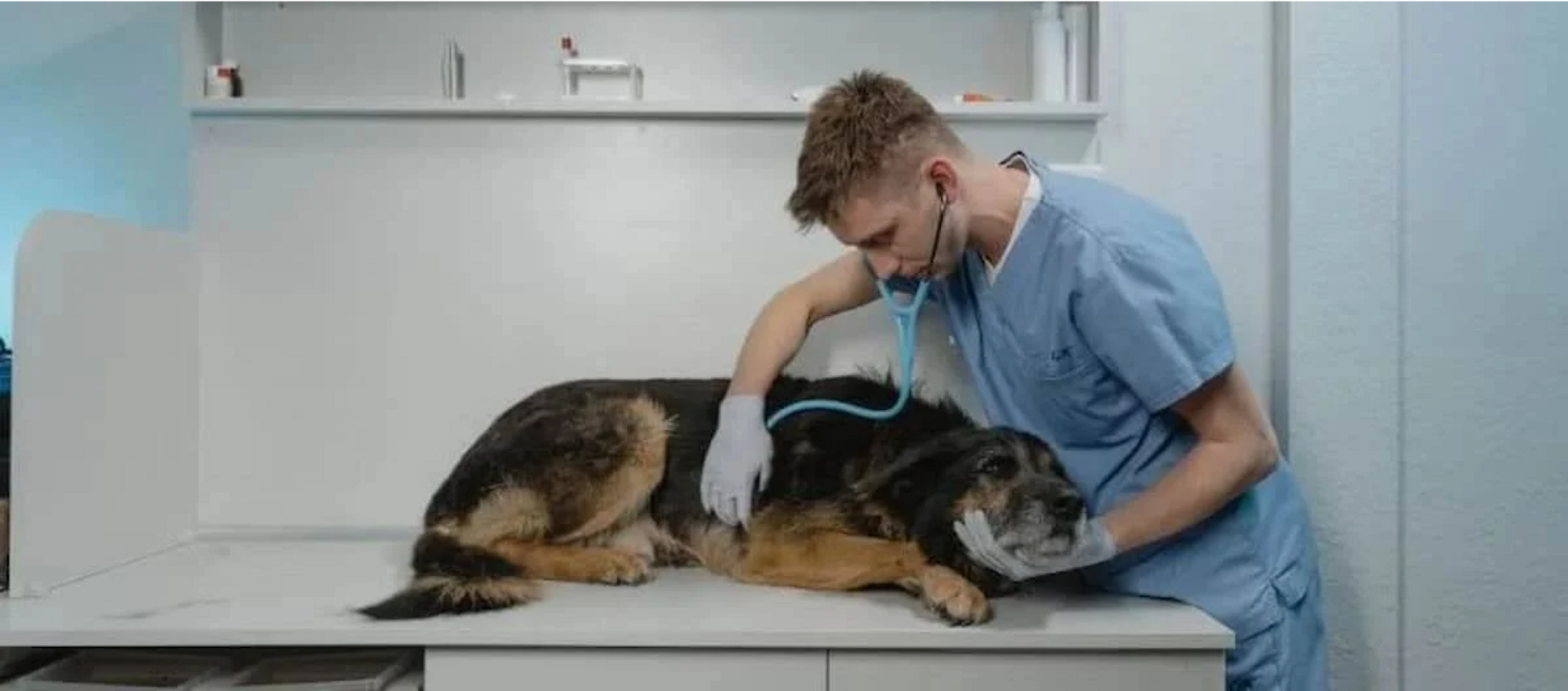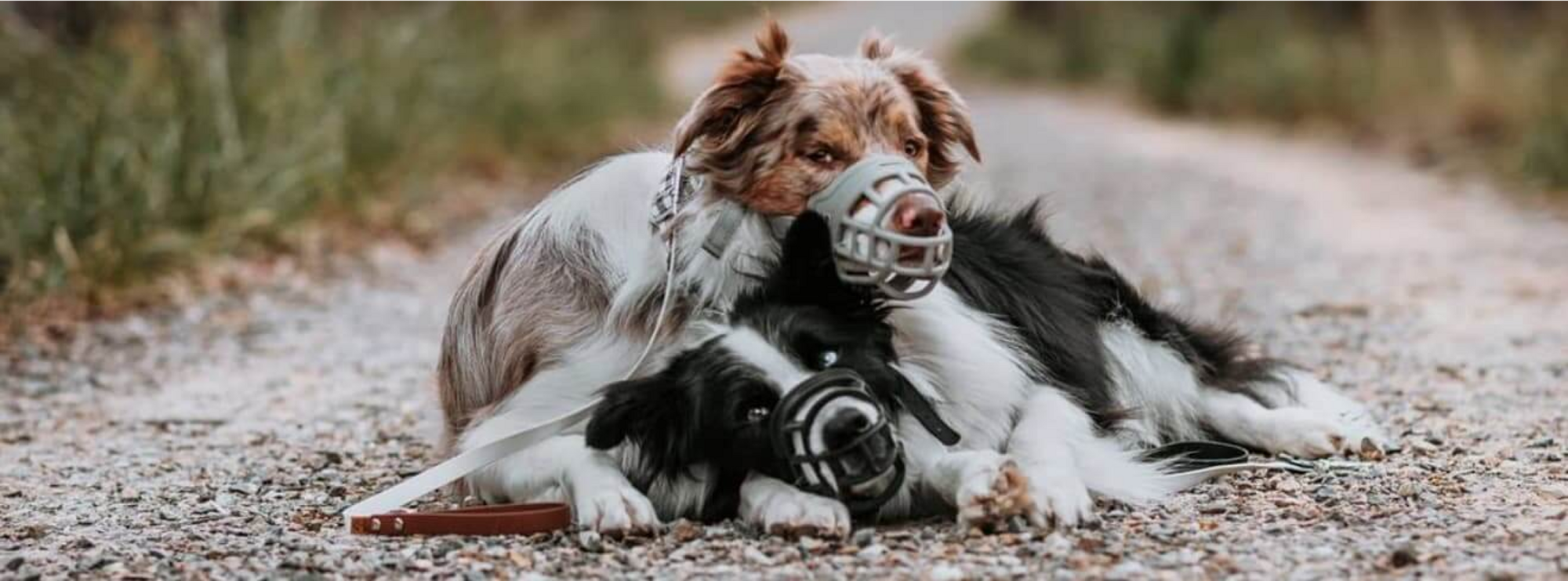Last Updated: 07/05/2025
Pica in Dogs: Causes Treatment and Prevention
Is your dog eating things they shouldn't? Find out why they might be doing this and the steps you need to take to prevent it.
Author: Dr Samantha Wycherley BVSc
Reading Time: 33 minutes - long read
Dogs are well known for trying to eat all sorts of unusual things that wouldn't seem appetising to us at all, but what if your dog starts to eat things even further beyond the norm?
If your dog is persistently trying to eat things that have no nutritional value - then they may have a condition called 'Pica'.
Pica is a puzzling condition where dogs persistently consume non-nutritional substances. From rocks to wood, plastics, and even fabrics, the compulsive ingestion of these items can pose serious risks to a dog's health.
This article will delve into the reasons why dogs might show this behaviour, explore its causes and understand the potential health implications.
Skip to a Section:
Understanding Pica in Dogs
In order to understand Pica we need to define Pica. It's important to be able to differentiate between when your dog is showing normal dog behaviour versus abnormal behaviour such as Pica.
Sometimes dogs may try and eat things that we would deem to be very unappetising however dogs seem to find them delicious! Dogs can try and eat all sorts of strange things such as roadkill, rotten food and more. Although this can be frustrating for owners to deal with (and can definitely make your dog sick) this isn't pica.
Pica means that your dog is ingesting things that have no nutritional value e.g. toys, plastic, clothing, rocks, sticks, socks.
Differentiating Chewing from Ingestion
It's also important to understand that chewing on non nutritional objects is another normal (albeit frustrating) behaviour in dogs that is different to Pica. Pica is a problem that occurs when dogs start to swallow these objects as if they were food.
Risks and Dangers Associated with Pica
Eating non-food items can have serious health implications such as causing an intestinal blockage which can be life-threatening. If you think your dog is showing symptoms of Pica then it's time to promptly intervene and contact your vet.
Causes of Pica in Dogs
Why would dogs want to eat non-food items? There are a number of possible underlying causes for Pica in dogs including both medical and behavioural reasons. Medical causes include nutritional deficiencies and gastrointestinal issues and behavioural triggers include boredom, anxiety and compulsive disorders.
Nutritional Deficiencies
Your dog's body knows what it requires to function and when it's missing something essential in the diet it can cause an unusual craving for your dog to try and fill this need - for example some dogs with mineral deficiencies have been known to eat soil.
Dogs may develop nutritional deficiencies due to a poor diet. Your vet will be able to evaluate your dog's diet and may look to transition your pet onto a high quality balanced commercial diet if they are concerned about a lack of nutrients.
Gastrointestinal Disease
Pica can also be associated with poor absorption of nutrients - this can be due to chronic gastritis/gastroenteritis or a malabsorptive disorder.
Gastrointestinal disease can have a wide range of underlying causes including genetic diseases, infectious, inflammatory or cancerous disease processes.
Anaemia
Dogs with anaemia may develop Pica due to the lack of iron. Dogs can develop anaemia secondary to chronic blood loss, increased consumption of red blood cells or destruction of red blood cells. This can cause the body to crave eating unusual things to replenish the iron stores.
Teething
Teething is a normal part of puppy development and this is a common time for puppies to want to start chewing everything! Although most dogs will stop at chewing occasionally this can progress to consuming objects too.
Boredom
Dogs need mental stimulation and when bored they will find something to do. When extreme boredom sets in dogs can develop unusual habits to keep themselves occupied.
Anxiety
Dogs that are suffering from anxiety can develop strange habits as a method of redirecting their stress, in some cases this may be Pica. Dogs that have severe separation anxiety may resort to eating unusual things when their owners are out of the home.
Compulsive disorders
Some dogs may be diagnosed with a true compulsive disorder. This is when your dog has an obsession with consuming foreign objects with no other underlying cause found.

Symptoms and Health Risks
Any consumption of a foreign body is cause for concern and your vet should be contacted. If it is occurring regularly then your dog likely has Pica.
The main health risk associated with Pica is a gastrointestinal obstruction however there are other health risks that need to be considered.
Your dog's teeth are not designed to chronically chew on non digestible items and regular consumption of woods/stones etc can lead to dental problems. Teeth can become cracked which can lead to pain and the need for dental extractions.
The consumption of foreign material can also lead to toxicities. Corrosive materials can cause life threatening injuries and certain substances such as metals can lead to metal toxicity.
Diagnosing Pica in Dogs
In order to diagnose Pica in dogs you will need to book in a visit with your local veterinarian.
Your vet will take a thorough history of your dog's behaviour and perform a full physical examination.
A diagnostic workup may be recommended which could include blood tests or imaging such as ultrasound or x-rays. If a gastrointestinal issue is suspected further tests may be necessary including blood testing for nutrient levels or an intestinal biopsy.
If your pet has recently consumed something they shouldn't have, your vet may want to take an x-ray to ensure that the item hasn't become obstructed in the intestine. Gastrointestinal foreign bodies can require surgery for removal.
Your vet will try to establish whether your pets issue is medical or behavioural and recommend appropriate intervention accordingly.
Treatment Options
Medical Intervention
Your first step in treating Pica should always be a visit to your local vet clinic to narrow down the underlying cause.
If your dog's pica is suspected to be due to poor nutrition then ensuring they are on a high quality diet is essential. There are plenty of premium diets available that have been formulated to meet and exceed your pets base nutritional needs.
If an underlying medical issue has been diagnosed you will need to work with your vet to treat this. This may involve medications, supplements or diet changes.
If underlying medical issues are ruled out by your Veterinarian as a cause of your dog's Pica, then preventative and behavioural approaches, as outlined below, are the next step.
Preventative Measures
Enrichment
Providing your dog enough enrichment in a day is a vital part of owning a pet. Dogs that are left with nothing to do can develop unhealthy coping mechanisms, this is particularly true for dogs that get limited interaction with people or other pets. Distracting your dog with plenty of boredom busting toys, rotating them regularly, and ensuring that your dog gets lots of love and attention can help to reduce problem behaviours.
Check out more tips in Boredom Busters for Dogs.
Exercise
Exercise is also a vital part of a dog's wellbeing and providing a physical outlet for boredom or underlying stressors can do wonders for your dog's mental health. Try and find time every day to get your dog outside and exercise beyond the backyard.
For more information, read through our article on How Much Exercise Dogs Need.
Reducing Stress
If stress or anxiety is believed to be the root cause of your dog's Pica then focusing on reducing your dog's anxiety is very important. You may find that there is a trigger for your dog's Pica e.g, when your dog is left home alone - in these cases working with your vet or a behaviourist to treat separation anxiety would be recommended.
For more information, check out our article on How to Calm an Anxious Pet.
Remove the Temptation
Whilst it's vital to address the underlying issue behind your dog's Pica you should also try and keep your dog in an environment where they don't have access to any inappropriate items they may try to eat. For example, if your dog is known to eat rocks then restricting access to areas of the property that have rocks or replacing rocks in your garden is recommended. You can also discuss the use of a basket muzzle with your vet when you know your dog will be in an environment where the items are easily accessible e.g. on a walk
To read more, take a look at How to Muzzle Train Your Dog.
It's also important to make sure everyone in the household understands that extra care must be taken not to leave items that may be eaten around the house e.g. some dogs develop a liking for socks so all socks should be put in the washing basket and kept out of reach after being worn.
Behaviour Modification Techniques
In order to try and modify our pets behaviour we need to have a good understanding of why our pets are doing what they are doing. Employing the help of a reputable trainer or asking your vet for a referral to a veterinary behaviourist can be invaluable in learning the why behind your pets odd habits.
Counter-conditioning
Some behaviourists recommend using counter-conditioning to try and break the habit of Pica. This can be done by putting a strong smell or bad taste on the item they are trying to eat.
Punishing your dog for eating the wrong thing is not recommended particularly in cases of anxiety as this may exacerbate stress and fear. Positive reinforcement of correct behaviour e.g. positively reinforcing leaving an object alone is a much more effective training technique.

Final Thoughts on Managing Pica in Dogs
Pica is a complex issue that doesn't have a straightforward diagnosis or solution but does require intervention to avoid negative outcomes to your pets health.
In many cases a collaborative approach is best - working with your veterinary professionals, reputable dog trainers and ensuring the whole family is on board with helping your dog to overcome this condition.
Further Reading
Want to read more? Check out our other articles:
Want to know more? Check out our Discover Page for more tips from our expert vets on keeping your pets happy and healthy.